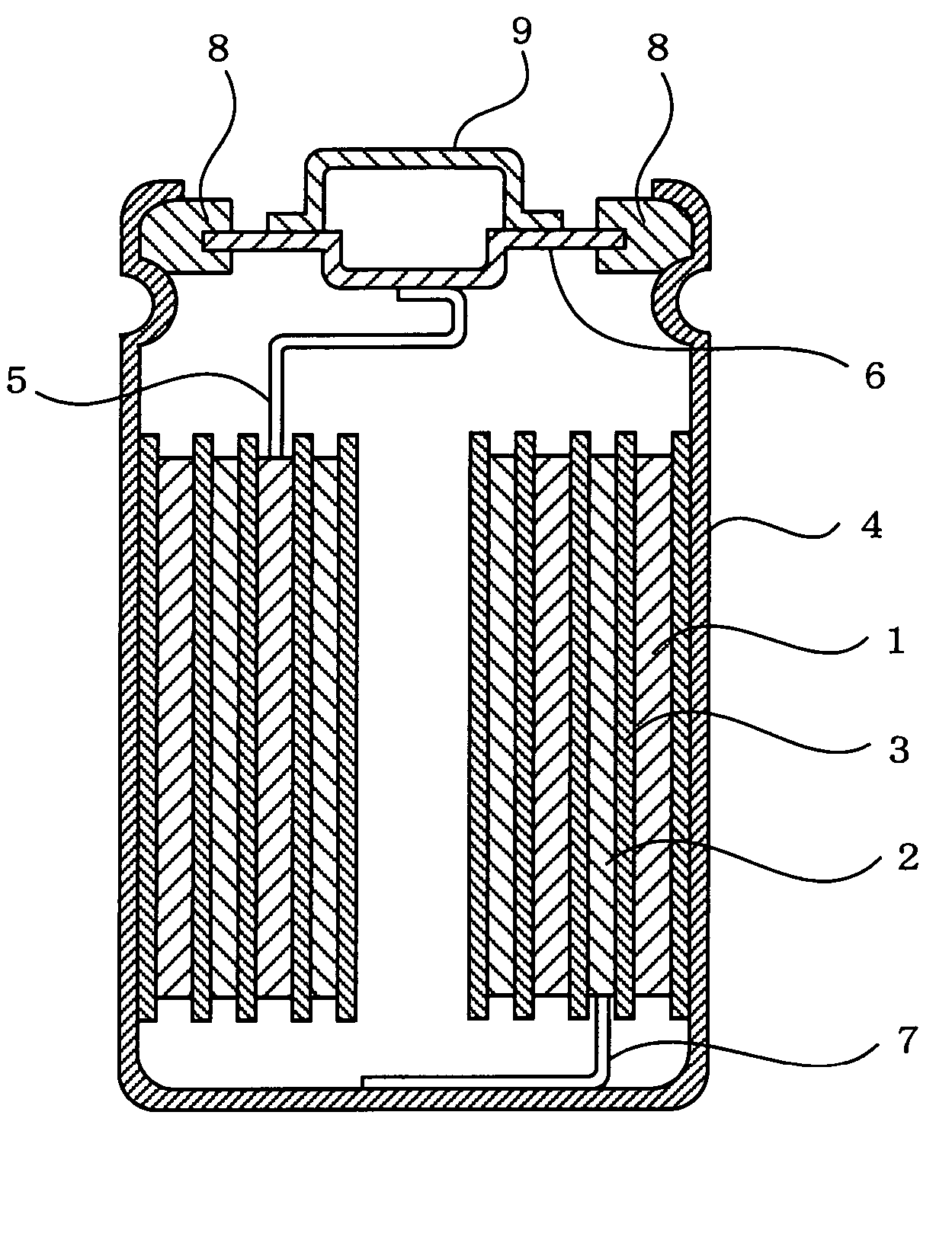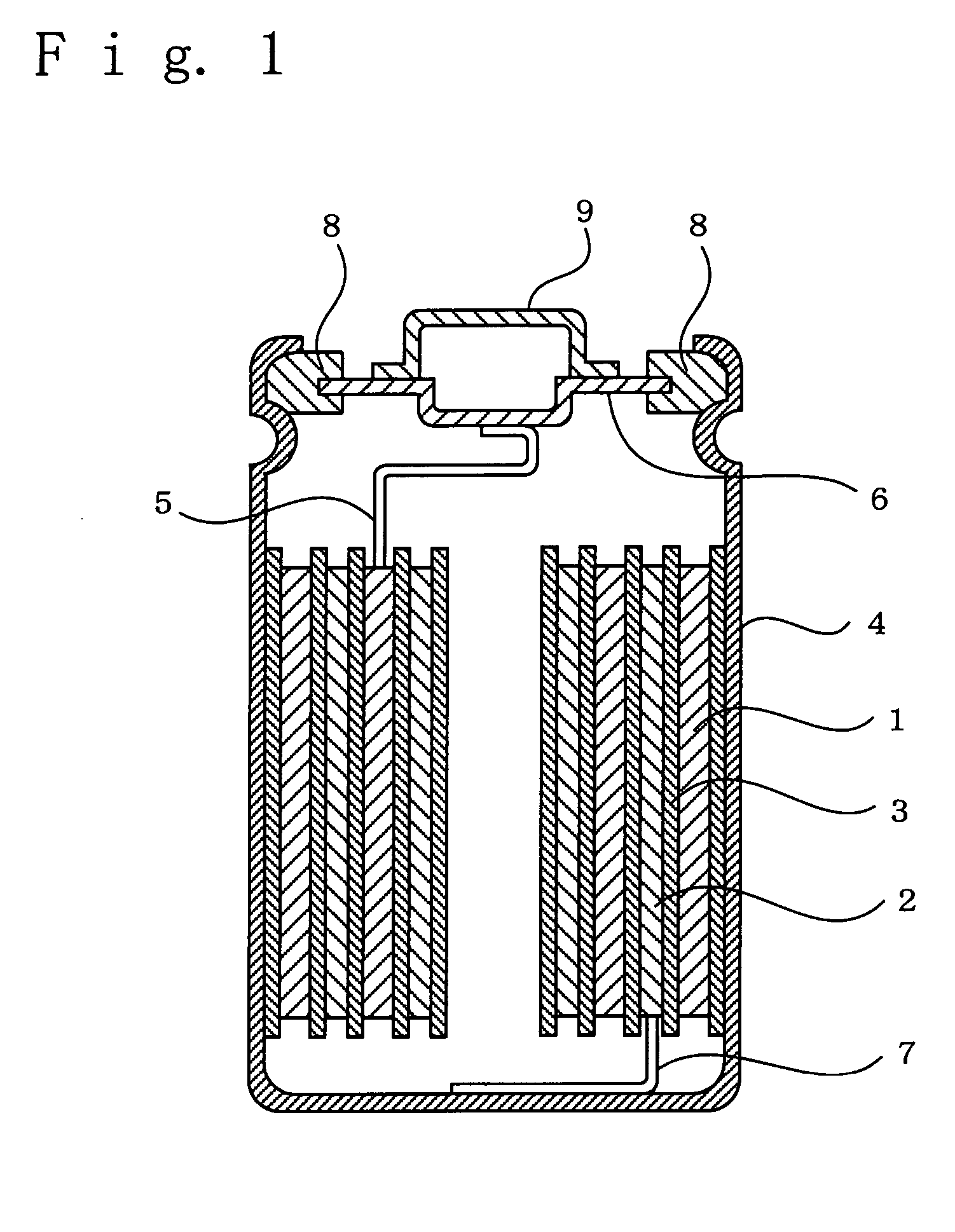Lithium secondary battery
- Summary
- Abstract
- Description
- Claims
- Application Information
AI Technical Summary
Benefits of technology
Problems solved by technology
Method used
Image
Examples
example 1
[0040] In Example 1, there were used a positive electrode, a negative electrode, and a non-aqueous electrolyte solution prepared in the following manners so as to fabricate a cylindrical lithium secondary battery as shown in FIG. 1 having a size of 18650 and a rated capacity of 1.4 Ah.
Preparation of Positive Electrode
[0041] In the preparation of the positive electrode, lithium-manganese composite oxide having a spinel structure represented by a general formula Li1.1Mn1.9O4 and lithium-nickel-cobalt-manganese composite oxide having a layer structure represented by the general formula LiNi0.4CO0.3Mn0.3O2 were mixed in a weight ratio of 3:7 to obtain a positive electrode active material.
[0042] The positive electrode active material, carbon as a conductive agent, and polyvinylidene fluoride as a binding agent were weighted out in a weight ratio of 90:5:5. The positive electrode material and the carbon were kneaded with a solution having the polyvinylidene fluoride dissolved in N-met...
examples 2 and 3
[0046] In Examples 2 and 3, in the preparation of the non-aqueous electrolyte solution of Example 1, the concentration of lithium bis(oxalato)bolate Li[B (C2O4) 2] to be admixed to the aforesaid mixed solvent was changed. Except for the above, the same procedure as that in the Example 1 was used to fabricate each of a lithium secondary battery of Examples 2 and 3.
[0047] The concentration of lithium bis(oxalato)bolate Li[B (C2O4)2] to be admixed to the mixed solvent was respectively set to 0.05 mol / l in Example 2, and 0.10 mol / l in Example 3.
example 4
[0049] In Example 4, in the preparation of the positive electrode of Example 1, only the lithium-nickel-cobalt-manganese composite oxide having the layer structure represented by the general formula LiNi0.4CO0.3Mn0.3O2 was used as the positive electrode active material and the lithium-manganese composite oxide having the spinel structure represented by the general formula Li1.1Mn1.9O4 was not used. Further, in the preparation of the non-aqueous electrolyte solution of Example 1, LiPF6 as the solute was dissolved in a concentration of 0.50 mol / l and lithium bis (oxalato)bolate Li[B (C2O4)2] was admixed to the mixed solvent in a concentration of 0.50 mol / l. Except for the above, the same procedure as that in Example 1 was used to fabricate a lithium secondary battery of Example 4.
PUM
 Login to View More
Login to View More Abstract
Description
Claims
Application Information
 Login to View More
Login to View More - Generate Ideas
- Intellectual Property
- Life Sciences
- Materials
- Tech Scout
- Unparalleled Data Quality
- Higher Quality Content
- 60% Fewer Hallucinations
Browse by: Latest US Patents, China's latest patents, Technical Efficacy Thesaurus, Application Domain, Technology Topic, Popular Technical Reports.
© 2025 PatSnap. All rights reserved.Legal|Privacy policy|Modern Slavery Act Transparency Statement|Sitemap|About US| Contact US: help@patsnap.com


